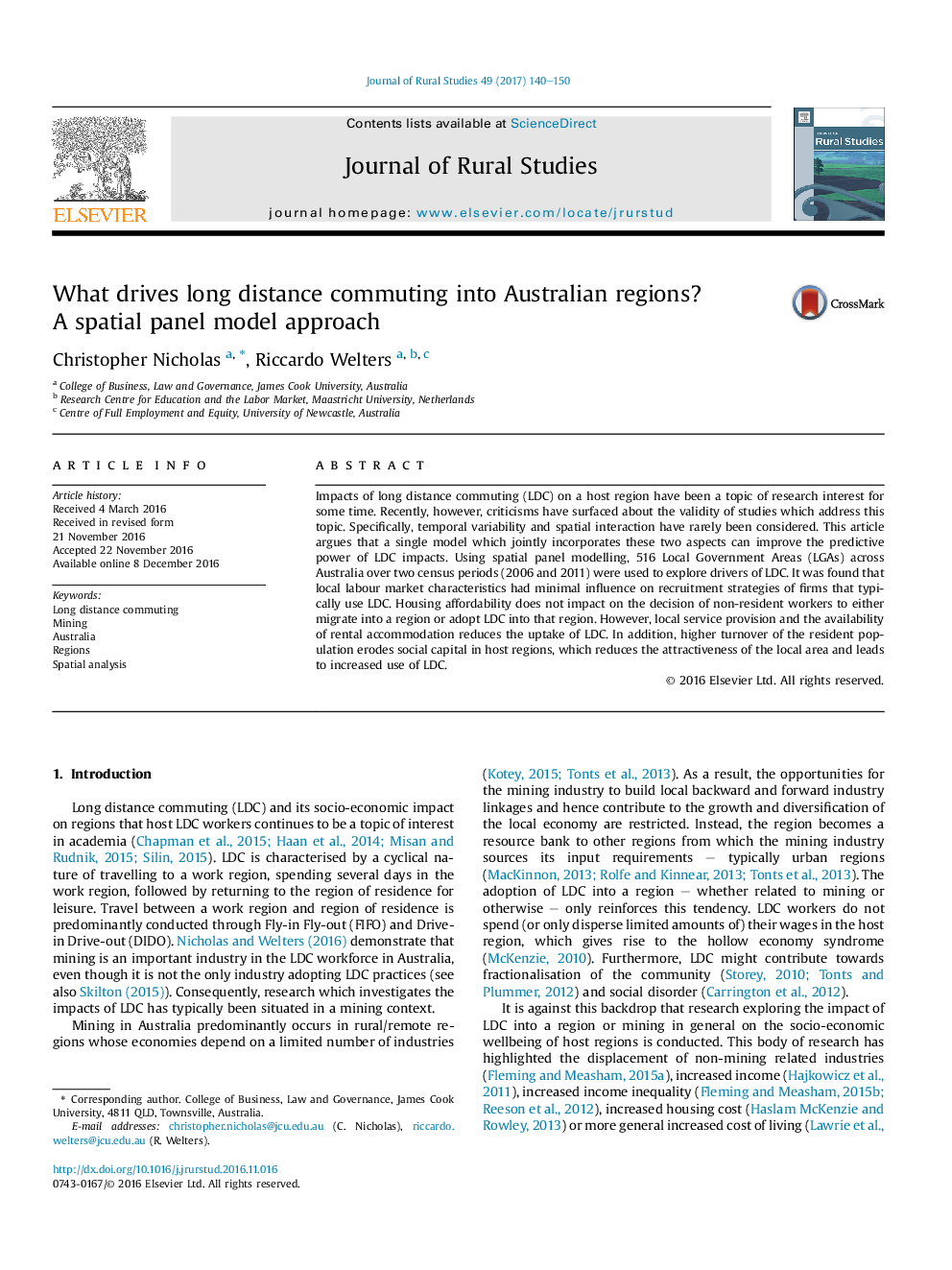| کد مقاله | کد نشریه | سال انتشار | مقاله انگلیسی | نسخه تمام متن |
|---|---|---|---|---|
| 6460311 | 1421782 | 2017 | 11 صفحه PDF | دانلود رایگان |
- Spatial interaction is important when studying impacts of long distance commuting.
- Population transience erodes regional social capital, increasing the uptake of LDC.
- Service provision increases regional attractiveness, reducing the uptake of LDC.
- Local labour market conditions have little or no bearing on the uptake of LDC.
- Availability of rental accommodation reduces the uptake of LDC.
Impacts of long distance commuting (LDC) on a host region have been a topic of research interest for some time. Recently, however, criticisms have surfaced about the validity of studies which address this topic. Specifically, temporal variability and spatial interaction have rarely been considered. This article argues that a single model which jointly incorporates these two aspects can improve the predictive power of LDC impacts. Using spatial panel modelling, 516 Local Government Areas (LGAs) across Australia over two census periods (2006 and 2011) were used to explore drivers of LDC. It was found that local labour market characteristics had minimal influence on recruitment strategies of firms that typically use LDC. Housing affordability does not impact on the decision of non-resident workers to either migrate into a region or adopt LDC into that region. However, local service provision and the availability of rental accommodation reduces the uptake of LDC. In addition, higher turnover of the resident population erodes social capital in host regions, which reduces the attractiveness of the local area and leads to increased use of LDC.
Journal: Journal of Rural Studies - Volume 49, January 2017, Pages 140-150
